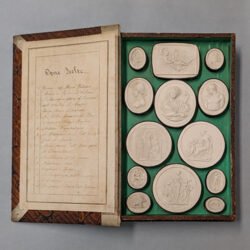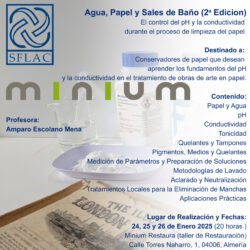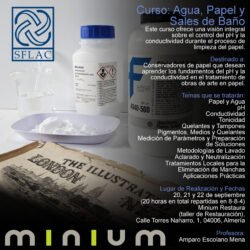

An Application of agarose in paper conservation
Not every artwork on paper allows us to perform a cleaning through the traditional washing process, but there are some other methods that can be considered when deciding on how to clean a piece with water sensitive media. Among them, felt/blotting washing, suction table washing or slant washing are the most frequently used, but the introduction of agarose gels in the conservation field has added a new tool for the paper conservator.
One of the fundamental advantages of the agarose gels is that they can be prepared with a multitude of cleaning solutions, which allows us to engineer the most adequate system for each particular case.
The washing process formalized by R. Wolbers, based on in a sequence of different baths prepared with sodium salts, chelators, and buffers, can be easily applied in cases of water-soluble media, using an agarose gel. As is always required with this system, all the necessary tests must be conducted. First and foremost, this is done to find out which one of the different cleaning solutions will give the best results. These tests also allow us to learn the necessary conductivity of the selected solution, along with determining the percentage of agarose necessary. This percentage is important in making sure that enough water is delivered to the paper without compromising the water sensitive media.
Similar to what we do in a regular bath sequence, three different agarose sheets should be prepared: one for cleaning, one for rinsing and the last one for adding the strengthening and neutralizing agent.
During the first step, the paper will be treated with an agarose sheet loaded with buffers and chelators in order to solubilize the degradation products present in the artwork. On the next step, the second agarose sheet will be loaded with sodium acetate. Being that the conductivity of this sheet is half that of the original paper, all solubilized products together with the buffers and chelators added in the first step, will be driven out the paper. Finally, with the last step, the paper will be exposed to an agarose sheet loaded with calcium acetate, again to a very low conductivity. This will drive out the sodium acetate used for rinsing while simultaneously strengthening and neutralizing the paper.
The example, a sketch for a comic book by Frank Frazetta, was cleaned with this method. After the treatment, there were some shadows of the original stains, but the overall appearance of the artwork showed quite an improvement.












2 Responses